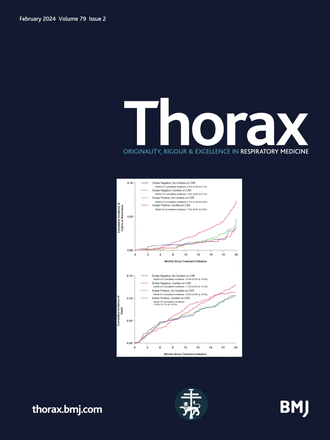Chronotherapy in asthma: BD or not BD? That is the question
IF 9
1区 医学
Q1 RESPIRATORY SYSTEM
引用次数: 0
Abstract
Globally, asthma remains one of the most common chronic conditions. The UK has one of the highest prevalence rates in Europe,1 with asthma accounting for 2–3% of general practitioner consultations.2 Asthma control is achieved, in most, by taking inhaled corticosteroid (ICS) containing medication regularly using an effective inhaler technique. Anything that can be done to improve the efficacy of asthma medication would be helpful, and enabling clear instructions to be given to patients may increase overall adherence and thus reduce the risk of asthma attack and lower the significant symptom burden. It is well established that asthma demonstrates a rhythmic pattern of diurnal variation with worsening nocturnal and early morning symptoms.3 Symptoms, such as cough, tight chest and wheeze, are often worse overnight or in the early hours of the morning, with approximately 90% of asthma attacks happening within this time frame.4 In addition, significant fluctuations in lung function throughout the day, along with a noticeable decline at night, are known to be indicators of disease severity, inadequate control and increased mortality risk.5 Potential mechanisms have been discovered, which explain this phenomenon. In those patients with asthma demonstrating nocturnal symptoms, the activity of the glucocorticoid receptor has been shown to demonstrate reduced steroid responsiveness overnight.6 The PER3 gene, which is linked to chronotype, had been demonstrated previously by Krakowiak et al to exhibit significantly greater rhythmicity in individuals with asthma compared to healthy controls.7 It therefore follows that aligning drug administration with the body’s circadian rhythm—known as chronotherapy—would likely enhance the efficacy of inhaled corticosteroid treatment in patients with asthma. This is the focus of the study by Wang et al published in …求助全文
约1分钟内获得全文
求助全文
来源期刊

Thorax
医学-呼吸系统
CiteScore
16.10
自引率
2.00%
发文量
197
审稿时长
1 months
期刊介绍:
Thorax stands as one of the premier respiratory medicine journals globally, featuring clinical and experimental research articles spanning respiratory medicine, pediatrics, immunology, pharmacology, pathology, and surgery. The journal's mission is to publish noteworthy advancements in scientific understanding that are poised to influence clinical practice significantly. This encompasses articles delving into basic and translational mechanisms applicable to clinical material, covering areas such as cell and molecular biology, genetics, epidemiology, and immunology.
 求助内容:
求助内容: 应助结果提醒方式:
应助结果提醒方式:


